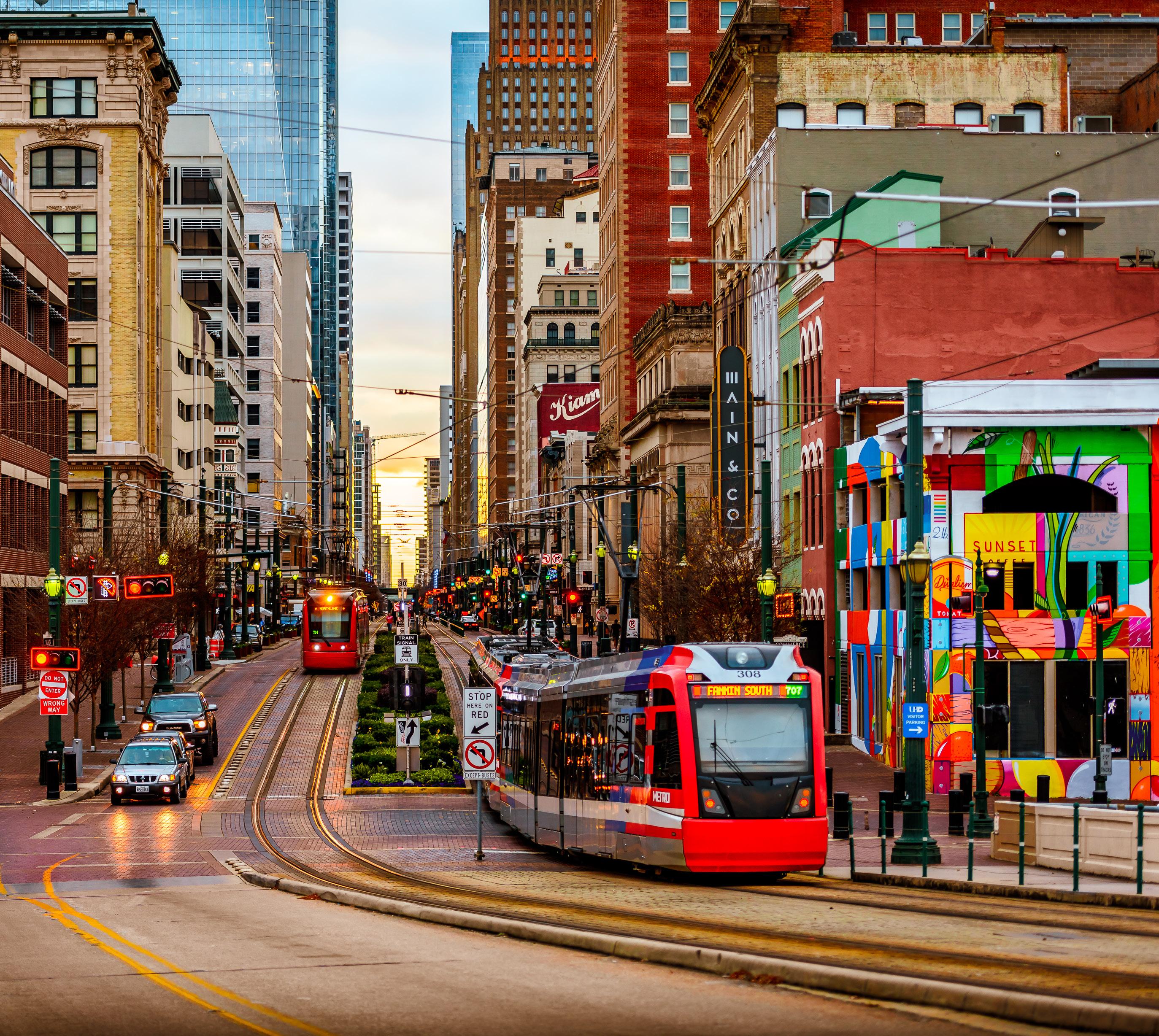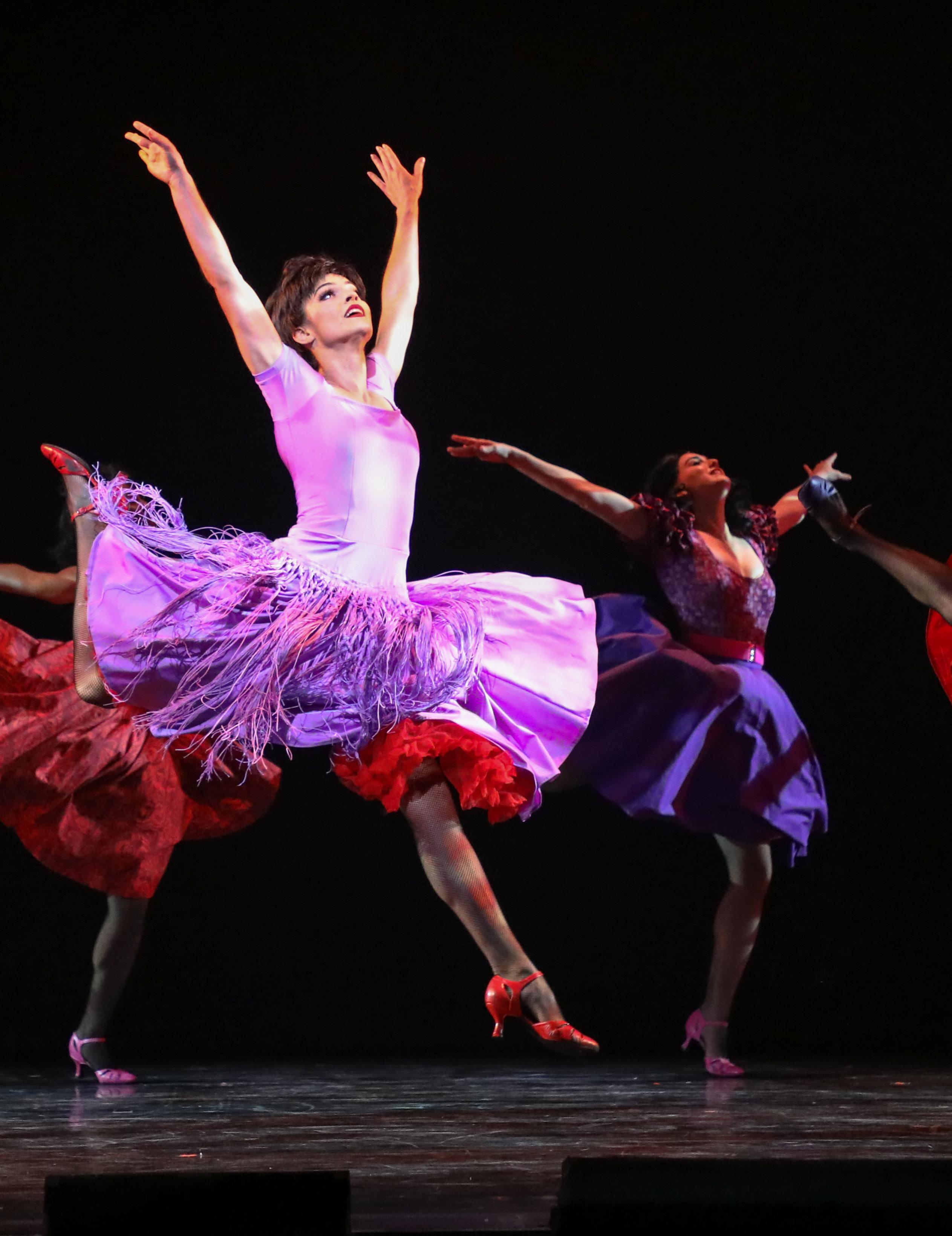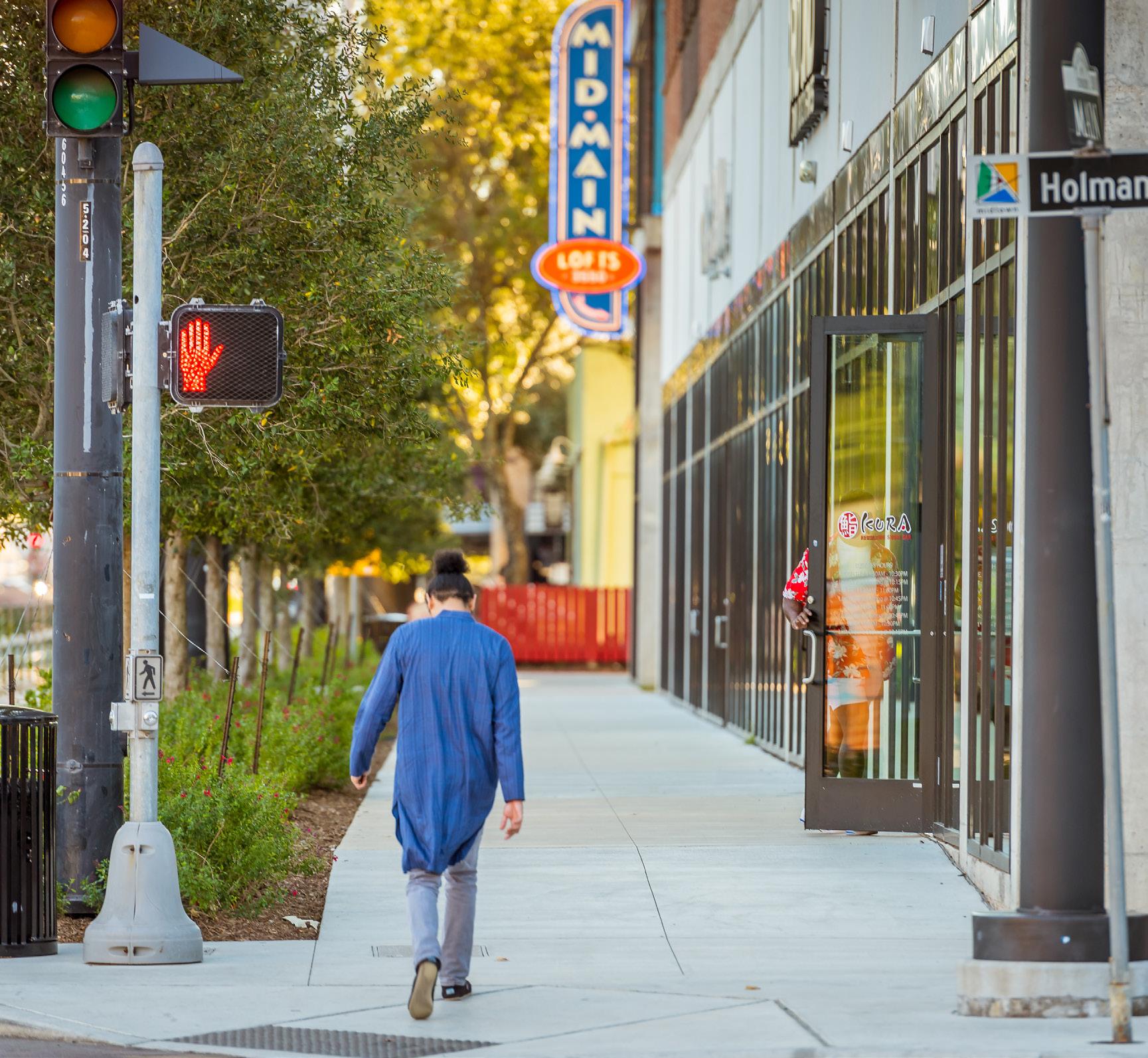
16 minute read
The Region
Downtown Main Street is a busy Metrorail thoroughfare.
A CLOSER LOOK
HOUSTON RANKS NO. 3 AMONG GLOBAL CITIES OF THE FUTURE
AAccording to a report released in August 2020, Houston ranks among the world's top cities of the future for global business investment, human capital and lifestyle.
Houston came in third in the overall ranking of the fDi Tier 2 Cities of the Future 2020/21, which takes a closer look at the non-capital cities with a population under eight million.
The report is published by the fDi
Intelligence division of the global news outlet Financial Times. In 2019,
Houston ranked No. 5 among American
Cities alone. The report attributes the ranking to Houston's position as a reputable talent hub, including being home to five global top 500 universities and over 30 international baccalaureate schools. This also contributed to Houston achieving third place in the Human Capital and
Lifestyle category, which weighs local educational institutions' strength, life expectancy, access to healthcare, and the Social Progress Index. Houston also placed sixth in the business-friendliness category due to its welcoming business environment. The report references the City's recorded 53 expansion or co-location projects between May 2015 and April 2020, representing more than a quarter of its total inward foreign direct investment and the second highest out of all locations analyzed. When it comes to economic growth potential, which looks at metrics such as GDP growth, credit rating, economic freedom and labor productivity, Houston ranks seventh.
“Houston is a remarkable city, and we are proud to be recognized as one of the world's best cities for foreign direct investment. We are the energy capital of the world, alongside the largest medical center, the Port of Houston, two world-class airports, and a growing innovation ecosystem,” said Houston Mayor Sylvester Turner. “The report is also a recognition of our work with community partners over the last five years to build a more livable city. We offer world-class education, art and culture in addition to our standing as a global business leader.”
Houston ranked No. 3 behind San Francisco and Montreal. Houston ranked ahead of other large North American cities including Boston (No. 6), Seattle (No. 9), Austin (No. 11), Miami (No. 18), Dallas (No. 19) and Atlanta (No. 20).
LIVE. WORK. PLAY.
The Houston region offers a low cost of living while maintaining an incredibly high quality of life with the amenities you expect to find in a world-class city. Houstonians, no matter what age or background, enjoy countless activities and opportunities. Houston is a welcoming and global city, filled with exceptional dining, arts, hotels, sports and events. In fact, GQ magazine dubbed Houston the “Capital of Southern Cool.”
Cost of Living
Houston’s overall living costs are 26.3 percent below the average of the nation’s 20 most populous metropolitan areas, ranking it the third most affordable, according to the Cost of Living Index from the Council for Community and Economic Research (C2ER). Houston’s overall living costs are 3.8 percent below the average for all U.S. metros.
Texas is one of the few U.S. states that does not have an individual income tax and ranks eighth for lowest individual taxes by CNN Money. In addition, Houston has one of the lowest personal and per-family tax burdens among major U.S. cities. Housing costs in Houston are 46.2 percent below the average for the nation’s 20 most populous metro areas and 3.1 percent below the average for all U.S. metros. Excluding the two most expensive housing markets, New York and San Francisco, which tend to skew the average, Houston’s housing costs are still 35.3 percent below the major metro average.

Living Cost Comparison
20 Most Populous U.S. Metros (U.S. Average = 100)
NEW YORK (MANHATTAN), NY
COMPOSITE GROCERIES HOUSING UTILITIES TRANSPOR- HEALTH CARE MISC. GOODS TATION & SERVICES
237.4 139.7 514.0 120.6 128.6 110.5 136.2
SAN FRANCISCO, CA 196.6 130.9 364.8 123.2 145.0 WASHINGTON, DC 159.0 115.7 274.0 118.1 110.4 SEATTLE, WA
BOSTON, MA
SAN DIEGO, CA 141.3 115.8 213.9 123.3 128.9
CHICAGO, IL 120.0 101.6 154.0 92.4 125.6
MIAMI, FL 114.4 110.2 142.7 102.1 101.3
DENVER, CO
110.8 98.0 137.8 80.6 100.8 PHILADELPHIA, PA 110.5 118.4 115.2 105.7 115.9 DALLAS, TX 107.7 100.0 117.5 106.9 96.6 MINNEAPOLIS, MN 106.2 103.3 101.7 97.6 104.3 ATLANTA, GA 102.4 103.1 102.4 85.2 103.4
DETROIT, MI 99.5 95.3 96.2 91.4 107.4
HOUSTON, TX 95.5 88.2 90.2 105.9 95.1 92.0 100.2
TAMPA, FL
Hermann Park Among the park’s popular attractions is the McGovern Centennial Gardens
Health Care
Houston’s Texas Medical Center (TMC) is the world’s largest medical complex by number of hospitals, number of physicians, square footage and patient volume. TMC’s 61 member institutions are consistently recognized by U.S. News and World Report as some of the best hospitals and universities in the nation. Prominent institutions include MD Anderson Cancer Center, Texas Heart Institute and Baylor College of Medicine, among other premier training, research and clinical institutions.
Urban Development
Houston’s large and growing footprint has led to a resurgence in urban living. The city’s signature neighborhoods, like Downtown, EaDo, Uptown, Midtown and Montrose, to name a few, offer residents access to urban living at affordable costs. Projects like the Uptown District and Avenida Houston in Downtown are just a few examples of how the city continues to invest in increasingly walkable dining and entertainment districts.
Outdoor Recreation
Houston is one of America’s greenest cities, ranking first in total park acreage among major U.S. metros. The region boasts 350 miles of interconnected bikeways, 380 developed city parks and 170 open spaces. In fact, Houston is home to two of the nation’s 10 largest urban public parks, Cullen Park and George Bush Park.
Over the past decade, Houston has seen a nationally recognized green space renaissance. Several of the city’s signature parks, including Memorial, Hermann, Buffalo Bayou, Levy and Discovery Green, have implemented master plans to further expand their offerings to Houston-area residents and visitors. The Memorial Park Master Plan is one of the largest and most visionary urban parks projects currently underway in the U.S. In September 2020, the Houston Botanic Garden opened on a 132-acre expanse in southeast Houston, promising to be a new outdoor centerpiece for the city.
In 2014, the Houston Parks Board and Houston Parks and Recreation Department embarked on a $220 million project to connect 150 miles of hike-and-bike trails and parks along the city’s eight bayous. By the end of 2020, an incredible 3,000 acres of unused land will be converted to public park space and 1.5 million Houstonians will live within 1.5 miles of the Bayou Greenways. The City of Houston has also recently announced a plan aimed at drawing private investment to revitalize city parks primarily in underserved communities.

Fired Up The Bananas Foster at Brennan’s of Houston is famous.

continued from previous page
Shopping & Entertainment
Houston is a shopping mecca and home to over 8,000 retail centers. From lavish malls, like The Galleria and Memorial City, to “storefront neighborhoods” like Post Oak, Highland Village, Uptown Park, River Oaks District and Rice Village, Houston’s shopping scene is as vibrant and diverse as the city itself.
Sports
Houston is a great place to play. You can enjoy countless activities without the premium price of other major cities. From team sports to extreme sports, Houstonians are loyal and have that winning spirit. Houston has played host to the nation’s - and the world’s - largest sporting events, including the Super Bowl, NCAA Finals, MLB All-Star Game, Copa America Centenario, and the NBA All-Star Game. Locally, Houstonians cheer on the ’17 World Series Champion Astros at Minute Maid Park, the Rockets at Toyota Center, the Texans at NRG Stadium, the Dynamo and the Dash soccer teams at BBVA Compass Stadium, as well as the rustlers at the Houston Livestock Show and Rodeo (the world’s largest live entertainment and livestock exhibition).
International Cuisine
Known as the Culinary Capital of the South, Houston delivers on its reputation. Houston restaurants feature outstanding regional dishes as well as diverse international cuisine. With nearly 11,700 restaurants and bars representing over 70 countries and domestic regions, Houston’s global ties are felt across nearly 160 categories of cuisine.
Houston was ranked second on Food & Wine’s “32 Places to Go (And Eat) in 2019.” This ranking is echoed in Yelp’s “Top 100 Places to Eat for 2019,” which includes five greater Houston eateries. “The Best New Restaurants in Texas for 2019” lists six Houston restaurants, of which three are collectively listed as No. 1. The increasing number of food halls in the Houston area is one of the reasons the New York Times included the city in its roundup of “52 Places to Go in 2019.”
Houston’s reputation of being a culinary hotspot is recognized by the James Beard Foundation, which announced the finalists of its 2019 James Beard Awards, the “Oscars of the food world,” in the city. The greater Houston area received 11 semifinalist nominations for this year’s awards.
Public Transportation
Houston’s mass transit network, METRO, serves an area of 1,303 square miles with 21 transit centers, 8,964 bus stops and 27 Park & Ride lots. Ridership in 2019, including bus, rail and Park & Ride, totaled 86.1 million passengers. As the city grows, METRO is actively working to improve mobility, enhance connectivity, and support vibrant communities through its METRONext plan.
Arts & Culture
Houston is one of the few cities in the U.S. with resident companies in all four major performing arts — drama, ballet, opera and orchestra. Houston’s world-renowned cultural scene includes more than 500 institutions devoted to the performing and visual arts, science and history. The region’s nonprofit arts and culture industry generated over $1.1 billion in total economic activity, according to the ’17 Arts & Economic Prosperity report by Americans for the Arts.
Houston’s Theater District, located in downtown Houston, spans 17 blocks, and its four flagship theaters house 13,000 seats. The Alley Theatre, Hobby Center for the Performing Arts, Jones Hall and Wortham Theater Center host seven renowned performing arts organizations as well as many smaller programs.
The Houston Museum District is one of the country’s most visited and diverse cultural centers with 19 museums. These museums provide rich experiences in art, history, culture, nature and science. The district is divided in four walkable zones, each of which includes a group of museums. Since 2018, investments in the Houston Museum District, including completed projects and some in progress, total more than $800 million.
Theater District Theatre Under the Stars performs at the Hobby Center.

A CLOSER LOOK

Downtown Public art in the heart of the city and, at right, taking a stroll near Mid-Main Lofts.
HOW HOUSTON IS BUILDING WALKABLE COMMUNITIES
IIn the last decade, Houston has made tremendous improvements to the region’s quality of life. In addition to its low cost of living, arts and culture amenities, and more than 125 miles of hike-and-bike trails, the City of Houston is taking steps to make communities more pedestrian-friendly.
The Partnership asked Margaret Wallace Brown, Director of the City of Houston’s Planning & Development Department, about the steps the city is taking to create walkable places.
How do you define walkability? How does it contribute to
the overall quality of life here? Walkability is more than a continuous sidewalk that allows people to get from one place to another. While safety is a critical component of walkability, so is comfort and interest.
The Walkable Places Program seeks to create a place where people want to be. With wider unobstructed sidewalks, a safety buffer, improved landscaping along the streets, more buildings with windows and doors right next to the sidewalk, and more mixed-use, compact development close by, it creates a more pleasant experience for pedestrians.
Walkability contributes to Houston’s quality of life in several ways.
First, it increases the wealth of businesses along walkable streets. Studies have shown that pedestrians or bicyclists can spend as much as 40 percent more than automobile users. High walkscores are often used by realtors to promote the sale of homes or business districts. Walkability also increases a community’s health by encouraging more heart-friendly activities. Finally, it’s one of the most equitable modes of transport.
Can you give a quick overview of the Walkable Places
Program? The Walkable Places Program, along with the new Transit-Oriented Development standards, supports Houstonians’ desire for more walkable environments. It encourages pedestrianfriendly, mixed-use development with an enhanced, walkable public realm. This ordinance creates the following benefits: • Property owners benefit because they get more buildable area and reduction in their required off-street parking requirements. • Pedestrians benefit because this program creates safer, more compact and interesting places to walk and enjoy. • Neighborhoods benefit from the creation of a more lively and activated area with more eyes on the street.
This initiative is the result of two and a half years of intensive research and discussion by a committee comprised of residents, property owners, developers and other business leaders. They overwhelmingly agreed that this effort will provide a more sustainable solution, ensuring safe multi-modal transportation. This initiative was unanimously approved by Houston City Council on August 5, 2020.
Talk about the three pilot projects for the Walkable Places program — Emancipation Avenue, Midtown, and Hogan and Lorraine Streets in Near Northside. Why were these areas
chosen for the pilot program? When selecting the pilot areas, we looked for a diversity of environments that could serve as role models for expanding the program. We sought out areas that have: • Some existing urban and pedestrian activities • High household/employment population density • High intersection density • A mix of land uses within walking distance and walking distance to transit services/ bikeways
We also sought out areas that would have community support, either through management districts or other community organizations.
What’s the difference between the “Walkable Places” designation and the “Transit-Oriented Development”
Program? The Walkable Places Program and Transit-Oriented Development Program are similar in the following ways: • Both promote pedestrian-friendly development tailored to the designated street(s). • Both create mandatory and optional compliance tailored to the local context. • Their planning standards are very similar and are established based on street segments. • Neither program requires the property owner to update their property unless they construct something new or modify either the exterior or parking lot of an existing structure.
The main differences between the two: • The Walkable Places program may be applied anywhere in the city, while the TOD standards are only applied along streets near established transit stations, including the new BRT route. Both City of Houston and property owners may designate • Walkable Place Streets, while the TOD standards are applied by the City using an objective process that analyses the unique characteristic of that block.
What were the outcomes for both the Walkable Places and Transit-Oriented Development ordinances? What are the
next steps? The Walkable Place program and TOD standards went into effect on October 1, 2020.
The next step is to implement the ordinance. We expect Houstonians will see an increase in wider, unobstructed sidewalks with safety buffers and improved landscaping along the streets. They will also see more buildings with windows and doors right next to the sidewalk and it will be a much more pleasant experience for pedestrians.
What other steps do you think need to be taken to make
Houston a more pedestrian-friendly city? We are making great strides in moving Houston toward a more multi-modal city. Other ongoing initiatives include: Vision Zero, the Complete Street Program, the Houston Bike Plan, and, with our partners, installation of nearly 500 miles of connected, high-comfort bike lanes that have been constructed within the past few years.
Energy Corridor The west side of Houston is home to several oil-and-gas headquarters.

HOUSTON WORKS TO SOLVE THE NEXT GREAT GLOBAL CHALLENGE: ENERGY TRANSITION
As the world looks to a greener future, energy industry leader and Greater Houston Partnership Board Chair Bobby Tudor knows Houston’s reckoning as the capital of traditional oil and gas is coming. We asked him how the region will stay on top.
Executive Summary Bobby Tudor addresses the 2020 Greater Houston Partnership annual meeting.

W
hen Bobby Tudor stood before a packed ballroom of local business leaders last January to deliver a speech on the need for Houston to lead the world in energy transition and a lower carbon future, few knew what kind of reaction he might get.
The speech was a bold move for the Chairman of energy advisory firm Tudor Pickering Holt & Co. and would serve as the lodestar to his tenure as Board Chair of the Greater Houston Partnership. Tudor knew then, as he does now, that Houston’s economic future rests on its ability to evolve with the changing demands on the energy sector. Still, in a city long driven and enriched by the oil and gas industry, his message that a reckoning was at hand might not be easily absorbed.
The address at the Partnership’s 2020 Annual Meeting marked a turning point in Houston. The local energy community accepted Tudor’s call to take on a leadership role and work that had already begun in some corners accelerated as others took up the charge. Less than two months later, the COVID-19 pandemic brought global activity to a near halt, compounding a dive in the oil markets that was already underway. Many companies once eager to develop new technologies and increase their investment in renewables now find themselves simply trying to stay afloat. The situation has made it harder to achieve key transition goals in the near term, though many believe the effort is now vital to Houston’s successful economic recovery.
We talked with Tudor about his decision to address energy transition and where the effort stands today.
Being Chair of the Partnership gives that individual a unique platform to advocate for something vital to the future of Houston. Why was it important to you to tackle energy
transition as part of your tenure? I think for several reasons. One is that it’s an issue not just of local, but of global interest and importance. Another is that the Houston economy is very heavily weighted to the traditional oil and gas business. It’s our job at the Partnership to look around corners and be aware of secular change, and position our companies for that secular change. Third is the issue of the tax base in Houston. Education, parks, libraries — all of that is ultimately highly correlated to the energy business because of how heavily

